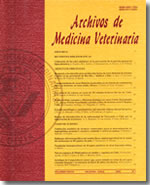Comparación del perfil de ácidos grasos de la leche entre tres sistemas distintos de producción lechera en la Región de Los Ríos, Chile
Contenido principal del artículo
Resumen
El objetivo de este estudio fue comparar tres sistemas distintos de producción lechera en la Región de Los Ríos, Chile, con énfasis en el perfil de ácidos grasos de la leche. Para ello se seleccionaron nueve predios representativos sobre la base de una encuesta y se clasificaron en tres sistemas de producción: pastoril (GS), mixto (MX) y ración totalmente mezclada (TMR). Muestras de leche de estanque se obtuvieron mensualmente durante 18 meses, para su posterior análisis de composición de leche y perfil de ácidos grasos. Los sistemas pastoril y mixto tuvieron la mayor concentración de ácidos grasos n-3 y ácido ruménico, lo que se asoció al alto consumo de pradera. Las muestras de leche de los sistemas pastoril y mixto tuvieron más del doble de ácido ruménico que la leche del sistema TMR al final del invierno y durante la primavera. Estos resultados concuerdan con estudios previos que mostraron altas concentraciones de ácidos grasos beneficiosos para la salud en leche de sistemas pastoriles.

